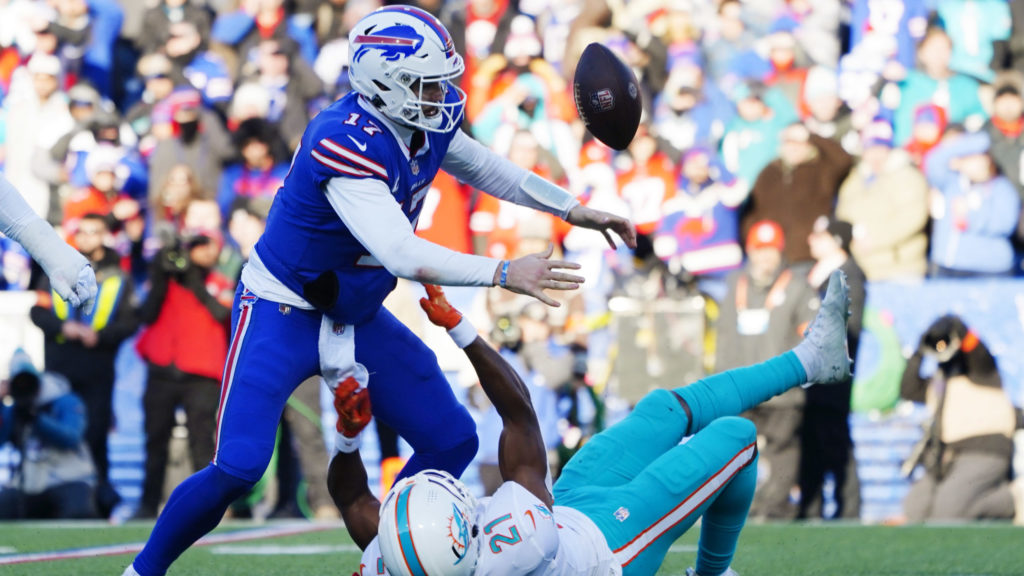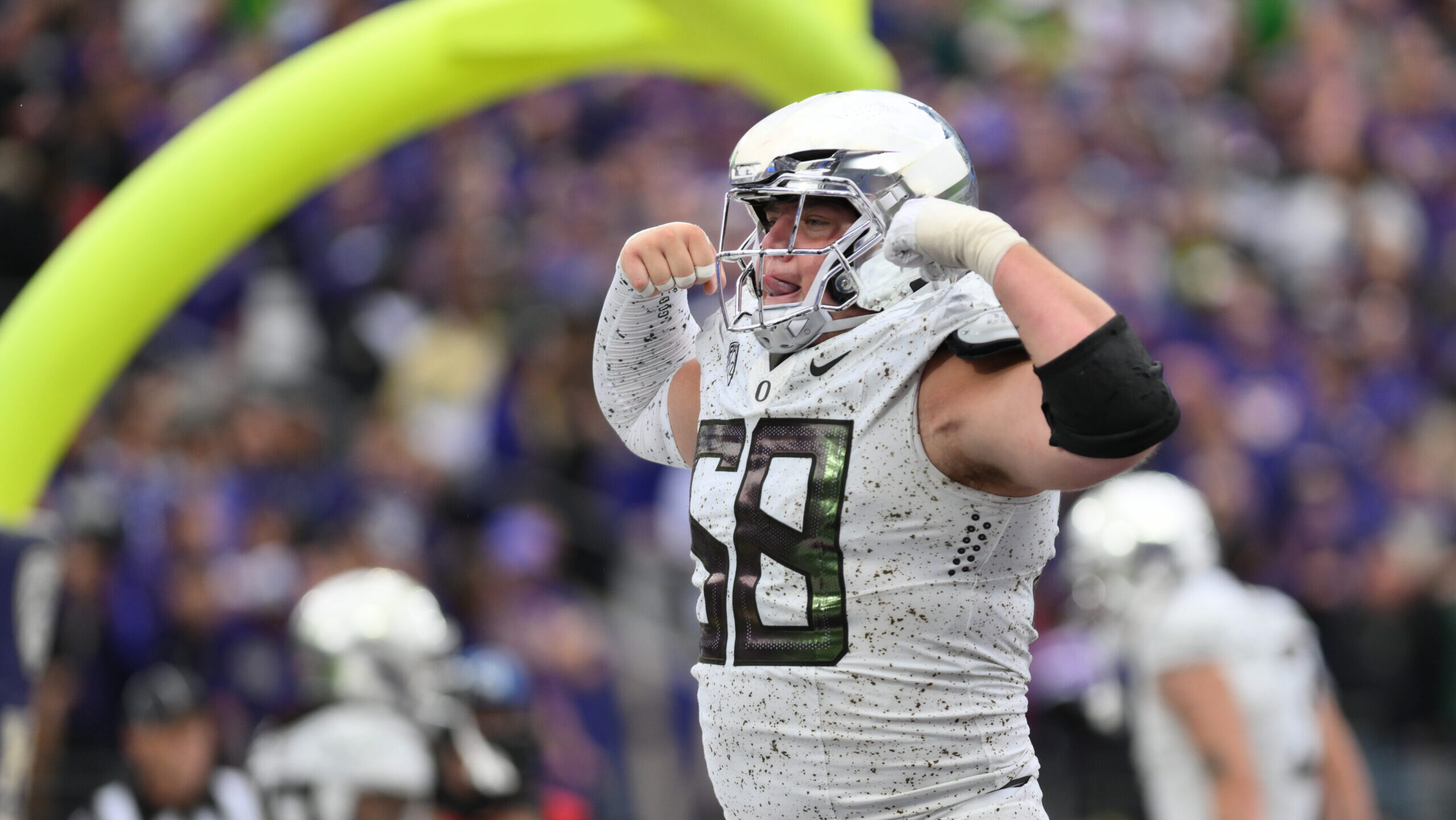Analysis
1/18/23
6 min read
What's Wrong with Bills QB Josh Allen? Maybe Nothing, Maybe Everything

I have a confession: When I watch Josh Allen and the Buffalo Bills, I’m not sure what I’m seeing.
I thought it was a quarterback and offense that had taken a step backward from last season. At least that’s the impression I had watching them survive Miami last weekend. But when I take a deep dive into meaningful numbers from one season to the next, I realize something I never expected.
That it’s not true.
In fact, if you compare Allen’s regular-season figures to his 2021 performances, they’re almost identical:
>> His touchdown passes this season were down, but only by one – from 36 last year to 35 this season.
>> His interceptions actually declined – from 15 a year ago to 14 this season.
>> His completion percentage was precisely where it was a year ago: 63.3.
>> He threw for fewer yards (4,283 vs. 4,407 in 2021), but he attempted 79 fewer passes.
>> His passer rating jumped from 92.2 last season to 96.6 in 2022.
>> His yards per attempt increased from 6.8 a year ago to 7.6, while his yards per completion moved from 10.8 to 11.9.
>> If there’s a significant difference, it’s with sacks. He took seven more this season (33) in one less game than a year ago (26).
Bottom line: What we’re seeing in the Bills’ offense is in line with where they were a year ago. In fact, it might be a tick better: The Bills this season were 13-3, while they were 11-6 in 2021 and averaged virtually the same number of points per game (28.43-28.41).
Nevertheless, none of that corresponds to what I was watching — and what I felt — as Allen and the Bills survived Miami last weekend. A year ago, I saw the Bills as a dynamic offense that couldn’t be stopped … until it ran out of time vs. Kansas City in the divisional playoff game. Last weekend, I witnessed an offense that sputtered to the finish line.
Allen missed throws. He committed critical mistakes, including a fumble returned for a go-ahead Miami score. I know, he threw for 352 yards and three touchdowns, but his three turnovers produced 17 Miami points. Furthermore, after jumping to a 14-0 first-quarter lead, the Bills had two touchdowns, two field goals and three turnovers in 13 possessions.
Yet crunch the numbers and they tell you that Allen’s passer rating that afternoon (93.1) was near his season average, while his three TDs and 352 yards were significantly above his per-game rates. So were his yards per completion (15.3) and yards per attempt (9.02).
That tells me one of two things:
1. Either my eyes are wrong, or ...
2. There’s a more subtle explanation for what I see and feel.
It could be either, and I’ll be the first to admit if I was wrong. When Allen first played in the league, he had challenges with his accuracy, and no surprise there. If you watched his college tape, it looked like what you thought you might see in the NFL. Except we haven’t seen it in three years.
Then last weekend happened.
He fumbled three times. He was sacked seven times. He failed to produce a fourth-quarter point when the game hung in the balance. Worse, the Bills had only 37 yards in three series that period, and that’s not how they’re used to closing games.
The numbers say that was an aberration, that Josh Allen is who we thought he was. Except there’s one noticeable difference in this year’s resume: His performance in the red zone. Specifically, his turnovers. They’re up. Way up. In his first three NFL seasons, Allen produced 65 TD passes and two interceptions (both on deflections) in the red zone. This season, that changed. Allen had 25 TDs, five picks and one aborted snap in the red zone.
Now look at his last three complete games: Eight TDs, five interceptions, four fumbles (including one that was lost). Contrast that to his previous five starts when he had one interception, and maybe you, too, are asking what’s going on.
Frankly, I don’t know. What I do know is that he doesn’t look as accurate as he was a year ago. Remember, I said: Doesn’t look as accurate, and I wonder: Is there less of a focus on fundamentals? Could it be something more specific, like the setting of his feet?
We all know he suffered an elbow injury, and it’s possible that could be a bigger issue than the Bills let on. But if it were, it should’ve translated to a change in numbers. It didn’t. That said, it’s worth noting the injury was to his throwing arm.
Maybe defenses figured some things out, forcing him to take more deep shots than you might expect – which, actually, I think is positive. It’s part of the reason his numbers stayed elevated. All I know is that Buffalo doesn’t look like the blitzkrieg offense that a year ago was clicking on all cylinders.
It looks more like one that’s good, not great.
That’s not a condemnation of offensive coordinator Ken Dorsey. When I saw Buffalo last weekend, my original instinct was that the Bills are suffering from the loss of former offensive coordinator Brian Daboll, now head coach of the Giants, and that there’s a difference between he and Dorsey, who succeeded him in Buffalo.
But statistics don’t support that theory. Dorsey is doing a good job, and to imply that a change of coaches has made a difference in Josh Allen and the Bills’ offense, well, the numbers refute that idea.
Which is why I’m intrigued to see what happens this weekend when defending AFC champion Cincinnati meets the Bills. Both teams beat Kansas City this season, and either could reach the Super Bowl.
My instincts tell me Allen is not the same. Numbers tell me a different story. So which is it?
That’s why I’ll be watching.
Joe Banner is a former front office executive for the Philadelphia Eagles and Cleveland Browns. He was a part of an Eagles franchise that made a Super Bowl and played in four NFC Championship Games. Follow him on Twitter at @JoeBanner13.







